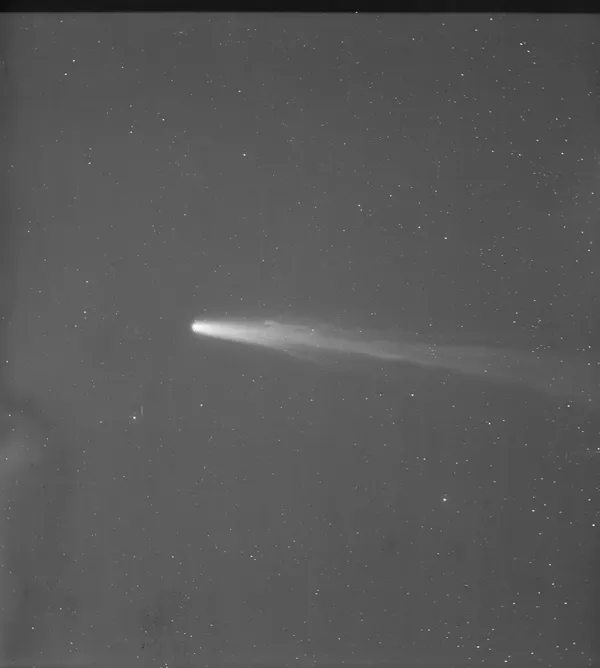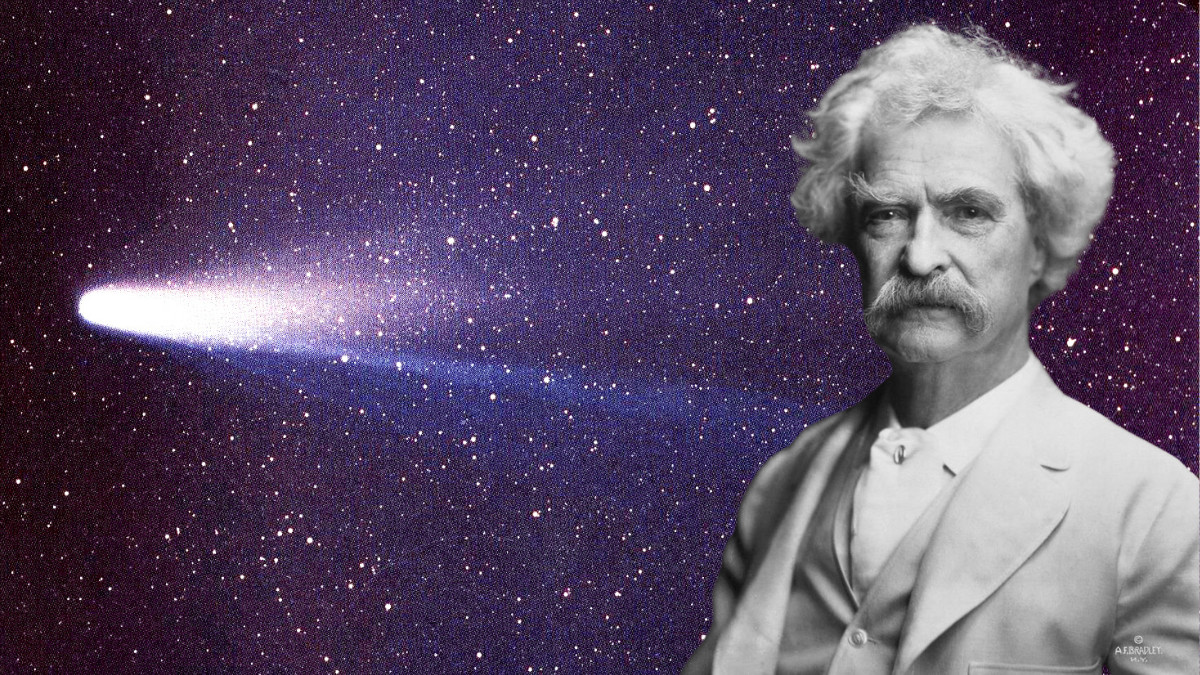Halley's perihelion, the comet's closest approach to the sun, occurred in 1835 and 1910, Twain’s birth and death years.
The comet was not at its closest point to Earth on the days that Twain was born and died.
Dubbed a "weird but perfect ending," the death of American writer Mark Twain had the same adventurist narrative arc as some of his most beloved and classic storytelling. Famously, the "Adventures of Huckleberry Finn" author said, "I came in with Halley's Comet … and I expect to go out with it."
Details of the literary icon's death have been shared across social media, often noting the coincidence of Twain's birth and death with the passing of the periodic comet, such as this post shared to X (formerly Twitter) on Feb. 22, 2024:
Mark Twain was born on the day when Halley's Comet flew by Earth. He said "I came in with Halley's Comet in 1835. It is coming again next year, and I expect to go out with it." Halley's Comet next appeared on April 21, 1910 - which is the day Mark Twain died. pic.twitter.com/grAUfEwkUU
— Eli 🐔 (@hollow_maven) February 22, 2024
Halley's perihelion — its closest approach to the sun — occurred in 1835 and 1910, Twain's birth and death years. But the comet was not at its closest point to Earth on the days Twain was born and died, as implied by the claim the comet "flew past" the planet on those dates. For this reason, we've rated this claim a "Mixture."
Snopes spoke with NASA Chief Historian Brian Odom, who referred our newsroom to an Oct. 14, 2021, article titled "955 Years Ago: Halley's Comet and the Battle of Hastings." In it, John Uri of the Johnson Space Center wrote:
In an interesting historical quirk, American writer Mark Twain, born two weeks after the comet's 1835 perihelion, died the day after its 1910 perihelion.
According to The Mark Twain House & Museum, the American author, whose given name was Samuel Clemens, was born in Florida, Missouri, on Nov. 30, 1835. He died at the age of 74 on April 21, 1910. The museum noted that Twain "was born and died in years when Halley's Comet passed by Earth" — not the dates it was at its nearest.
Halley passed its perihelion on Nov. 16, 1835, and data published by NASA's Jet Propulsion Laboratory shows that the comet's next perihelion was on April 20, 1910 — the day before Twain died.
Because comets are subject to the laws of physics, it can take days, weeks or even longer for them to make a pass of Earth. News reports from 1910 suggest that Halley's comet was most visible in the U.S. between May 18 and 20, though Wired reported the comet was at its brightest from May 14 to 22. That Halley was so visible during this timeframe suggests the comet was at its closest point to Earth, also known as perigee. Regardless, this occurred roughly a month after Twain died.
Halley's 1910 passage was especially newsworthy as "newspaper predictions about the impact of Halley's Comet led to public fear and mass hysteria," the Library of Congress wrote. Before the comet arrived, some scientists reportedly said cyanogen gas in its tail could end all life on Earth, inducing public anxiety about the "end of the world."
It should come as no surprise that Halley's appearance impressed Twain, with the author being credited as having said not long before his death:
I came in with Halley's Comet in 1835. It is coming again next year, and I expect to go out with it. It will be the greatest disappointment of my life if I don't go out with Halley's Comet. The Almighty has said, no doubt: "Now here are these two unaccountable freaks; they came in together, they must go out together." Oh, I am looking forward to that.
Officially known as 1P/Halley, the periodic comet moves backward to Earth's motion, or in retrograde, around the sun. On average, this orbit takes around 75 years, though the period varies due to the gravitational effects of the surrounding planets. Halley's passing is measured from one perihelion passage, the closest distance to the sun, to the next, with its shortest orbit being 74.42 years, between 1835 and 1910, according to NASA.
Discovered in 1705 by Edmond Halley and described in his "Synopsis Astronomia Cometicae," Halley was the first comet scientifically proven to return to Earth. Since then, the comet has been connected to ancient observations for more than two millennia, including its feature on the famous Bayeux tapestry that depicted the 1066 Battle of Hastings between the Norman-French and English armies.
 (Public Domain/Wikimedia Commons)
(Public Domain/Wikimedia Commons)
Referred to by NASA as "cosmic snowballs," comets are made of dust, rock and ice that degrade over time. With each orbit around the sun it's estimated that Halley, which is about 9.3 miles by 5 miles across, loses between 3 and 10 feet of material. Halley has been in orbit for at least 16,000 years and — as the average periodic comet lasts about 1,000 trips around the Sun — will be visible for another 60,000 years, give or take a few.
Halley is the only comet visible to the naked eye comet that can be seen twice in a human lifetime, according to NASA. Upon its return to the inner solar system, Halley sprays ice and rock into space resulting in two yearly meteor showers, May's Eta Aquarids and the Orionids in October.
 Halley's Comet as it appeared in 1910, photographed in Arequipa, Peru. (Public Domain/Wikimedia Commons)
Halley's Comet as it appeared in 1910, photographed in Arequipa, Peru. (Public Domain/Wikimedia Commons)

